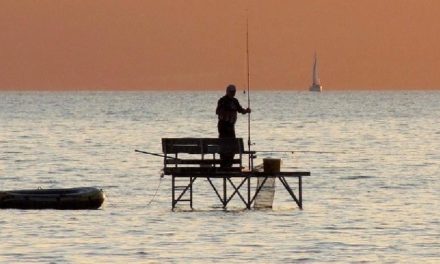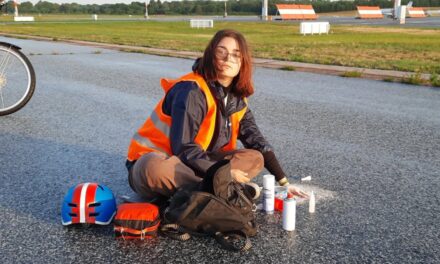The Mária Valéria bridge between Esztergom and Párkány not only makes life easier for the residents of the two cities, but also for those in the surrounding area, as it significantly helps passenger traffic between the two countries, enables the use of services provided on both sides of the Danube, the movement of small goods, employment at the border and school attendance. The bridge is mentioned today because it was inaugurated on this day, September 28, 1895. The bridge was named after Archduchess Mária Valéria, the daughter of Francis Joseph I.
Since the reconstruction of the bridge in 2001, countless people have crossed it, on foot or by vehicle, but relatively few people know about the history of the crossing.
According to the descriptions, as early as AD There is also a written memory of the Danube crossing between Esztergom and Párkány from 170. During the reign of the Roman emperor Marcus Aurelius Antonius, the conquering Roman legions also crossed here. And when Esztergom became the royal seat in 1075, a ferry began to operate between the two coasts, and Géza I donated 10 ships to the abbot of Garamszentbenedek to operate the ferry, which was used from 1215 onwards by II. Endre made it mandatory for everyone driving there. Later, during the Turkish subjugation, in 1585, a stable boat bridge was built on behalf of Buda Pasha Szinán, which connected the two banks of the Danube for almost 100 years. This bridge was finally destroyed in 1683 under the weight of the fleeing Turkish troops. In the nearly 80 years that followed, traffic was carried out only by ferries and boats. When the city of Esztergom was liberated in 1762, an aerial bridge - a shuttle ferry - was put into service. It was a special floating structure placed on 7 decks, held by a 400 meter long rope and driven from one bank to the other by the current of water. This solution did not hinder ship traffic either, and both the upper and lower fairways could travel next to it. In 1842, a boat bridge was built again on the river in the hope of higher customs revenues. 22,000 mássa wool was transported through it to the Medárd day fair.
The boat bridge, which was damaged in the War of Independence in 1848 and burned down in 1849, was reopened to traffic in 1851. In view of the increased steamboat traffic, the rules regarding opening hours were tightened and the bridge was illuminated at night. During the tenure of Gábor Baross as Minister of Public Works and Transport, the construction of a permanent iron bridge in Esztergom was also planned. With the cooperation of Prince-Primate Kolos Vaszary, the construction of the bridge was included in the annual budget of the 1893 parliament. The axis of the bridge was set 120 meters higher than the axis of the ship bridge, which is still under construction. With this, they achieved that the traffic coming down from the bridge arrived directly in the center of the city of Esztergom. In 1893, an invitation to tender was issued for the construction of the bridge, which was won by Cathry Szaléz and his son, the builder of the cogwheel railway and other large bridges, out of four contractors. Thus, they were able to build the permanent bridge with a budget of nearly HUF 1.5 million, the preparatory work for which was completed in about 3 months (excavations, design documentation, technologies). On February 23, 1894, construction began. They worked day and night, loosening the extremely hard ground with repeated blasting. At the workplaces located 14 meters below the pillars, they even worked with electric lighting, and the Machinery Factory of the Hungarian Royal State Railways assembled the lattice bridge structure with complete scaffolding. Nearly 490,000 rivets had to be hammered in by hand, but it was worth it, because by the end of 1894 all the bridge abutments and pillars were completed. The ceremonial handing over of the bridge took place on September 28, 1895, and it was named after the most Hungarian royal archduchess, Mária Valéria, the daughter of Ferenc József, born in Buda.

Photo: MTI/Balázs Mohai
On the evening of July 22, 1919, between 19:30 and 19:45, the first opening on the ledge side fell into the water due to an accident - as a result of an explosion. The accident was probably caused by the careless handling of ammunition by the soldiers assigned to the guard. The structure was raised in the summer of 1921, but was not put back in place, only a connecting bridge suitable for pedestrian traffic was built over the damaged bridge structure. The final restoration was completed only five years later, when the structure of the renovated opening was repainted and the bridge was covered with asphalt. On May 1, 1927, traffic could start again on the completely restored bridge. In 1938-39, as a result of periodic bridge inspections, the Magyar Vagon- és Gépgyár replaced 38,000 rivets. The II. During World War II, the bridge was targeted by air raids, but was not seriously damaged. It was blown up by the retreating German army on December 26, 1944. The three middle openings were damaged and two pillars were also significantly damaged.
In the decades that followed, the rebuilding of the bridge was discussed only at the level of ideas and plans, until an agreement was reached on the rebuilding of the bridge and the related institutions on August 25, 1999, and then on September 16, the heads of government of Hungary and Slovakia signed the reconstruction of the Mária Valéria bridge. agreement, and in 2000 the tender for the reconstruction of the bridge was announced. The completed bridge was handed over on October 11, 2001 by the Prime Ministers of Slovakia and Hungary.
Source: Felvidék.Ma
Featured image: MTI/Zoltán Máthé












